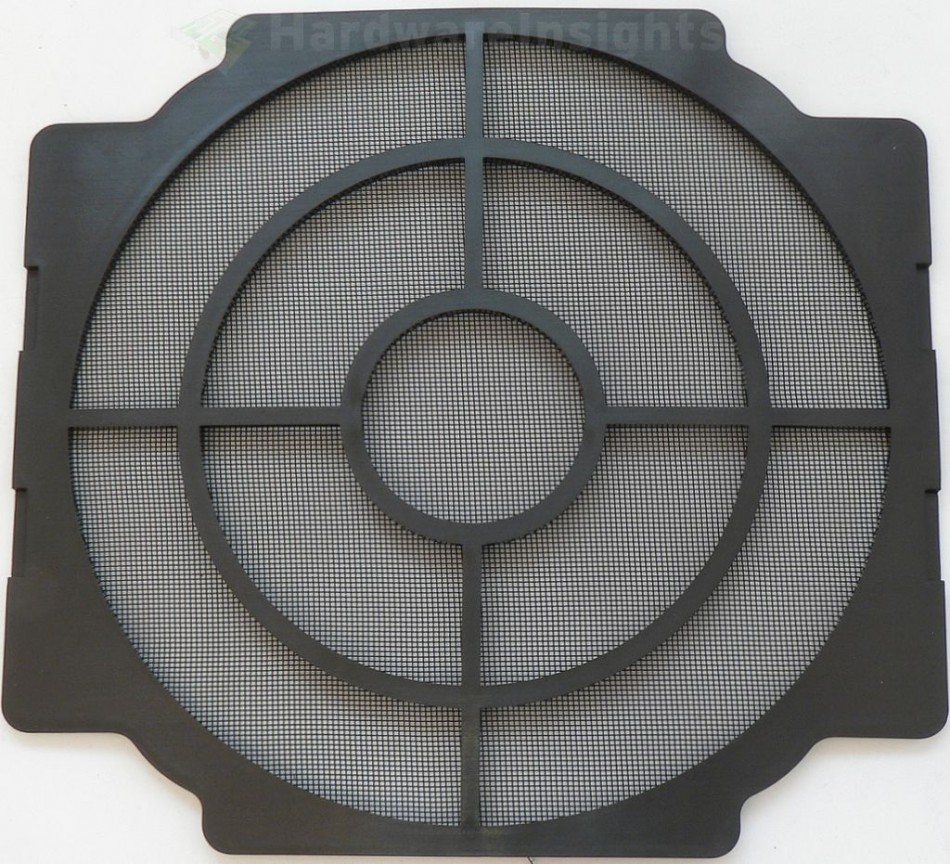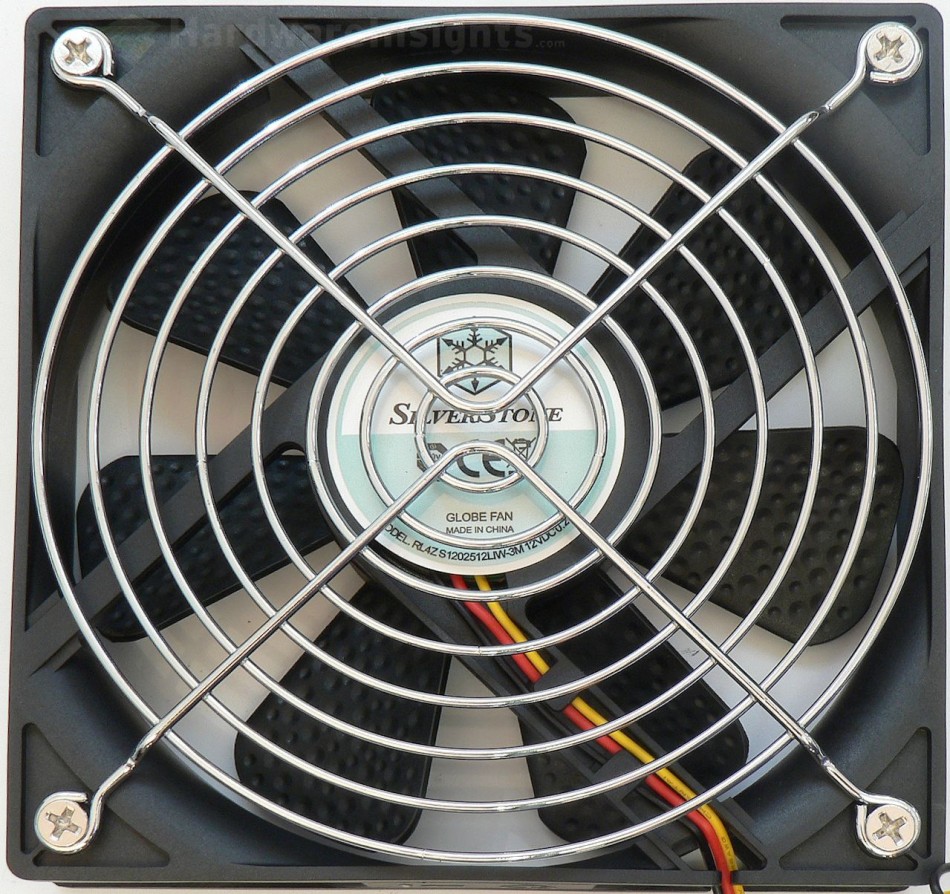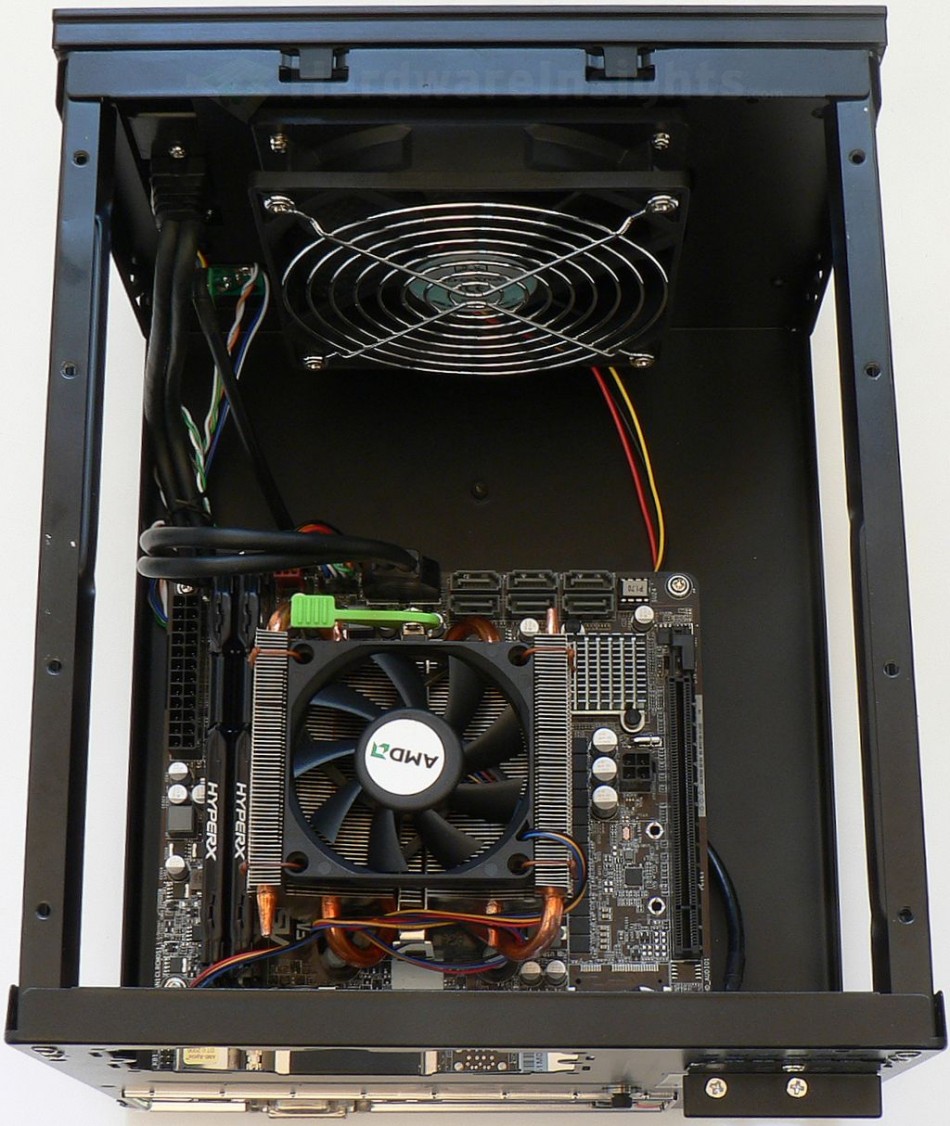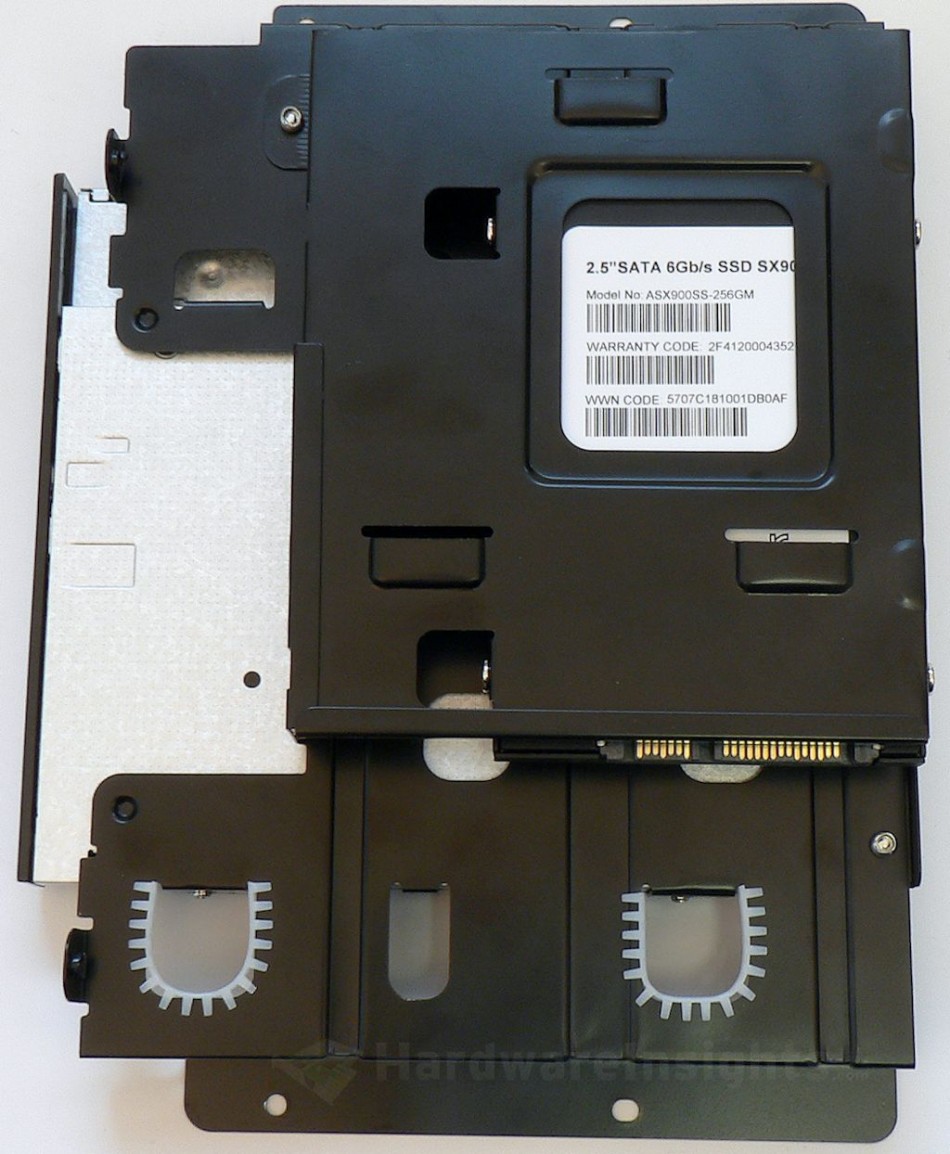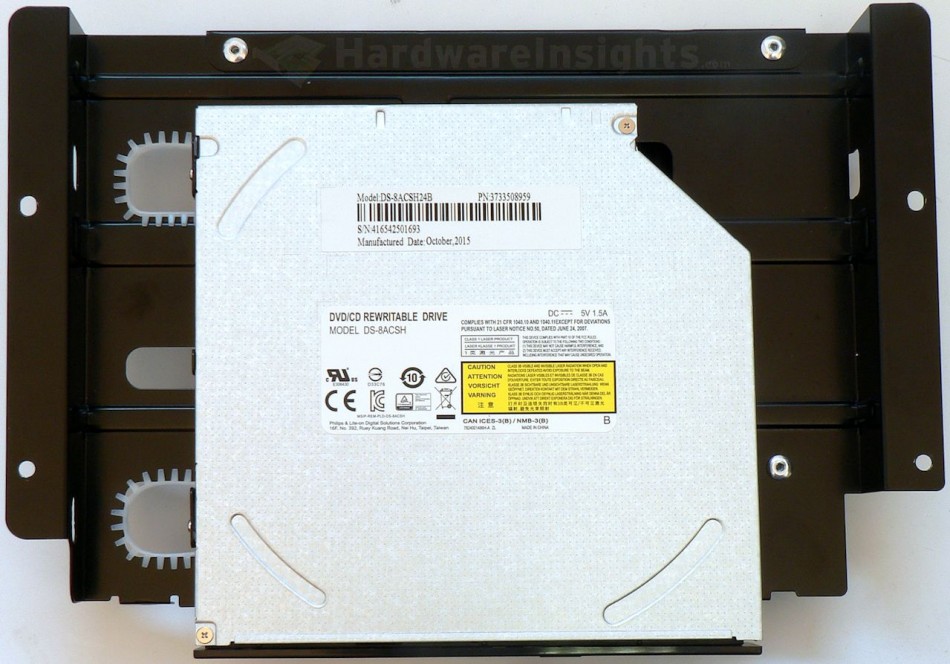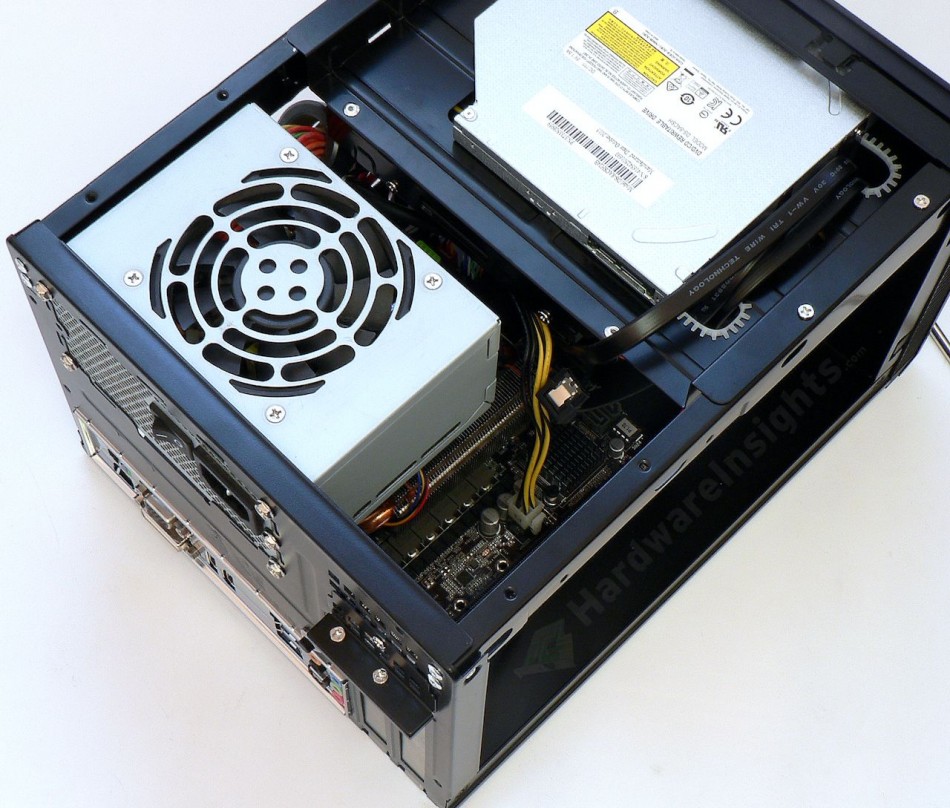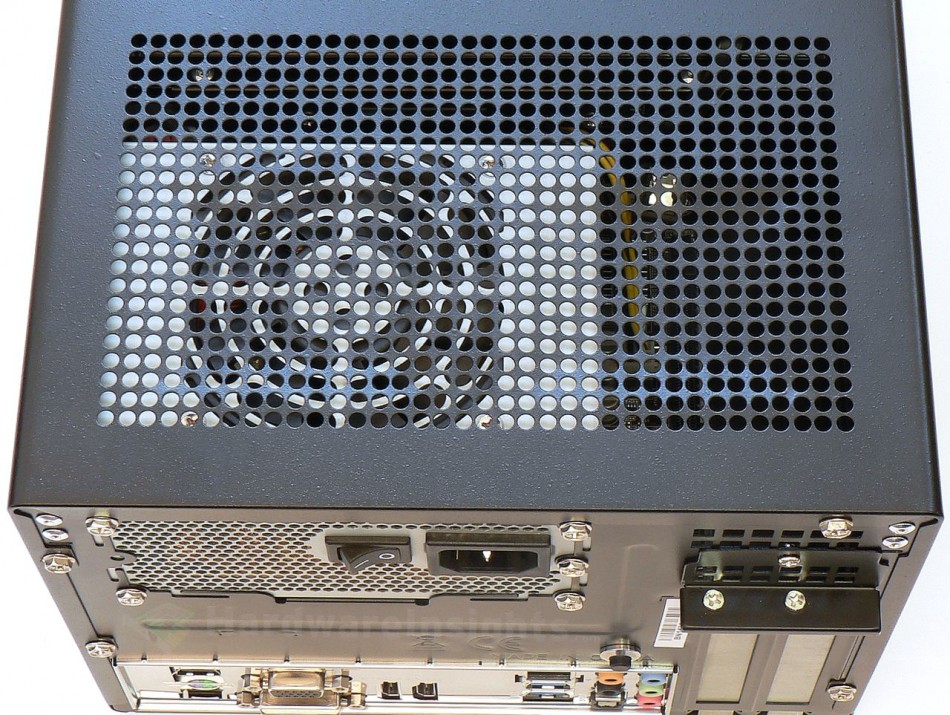Contents
Cooling & component installation
Lets take at the fan filter first. The mechanism by which it is held in place isn’t exactly the best, as it sits off-center, and some of the air passing through will miss the mesh. This will get worse as the filter gets clogged in dust, allowing for unfiltered air to enter the case.
The fan used is from Globe Fan with Silverstone branding on it. These companies collaborate regularly, and so far almost all their power supplies I have seen used fans from Globe Fan. This time it’s the RL4Z S12025LIV-3M, which is a 120mm sleeve-bearing model. This is a low-speed version, and in this case it’s rated for 1200 RPM, with a noise rating of only 20 dBA. This rating may have been achieved with the golf-ball dimpling pattern on its blades, as well as perhaps their unique shape and not to mention the fan’s inherently low speed.
However, the airflow rating isn’t provided and this fan doesn’t really make me feel that it’s going to move much air, especially when you consider that the filter will also impede the intake. But it is indeed is silent, and in a silent room with 38.8 dBA of ambient noise registering on my meter, it didn’t surpass that measurement (for more on my sound testing methodology, please visit this link. That being said, the advertised speed is completely inaccurate, as the fan spun at around 1020 RPM (at 12.11 V). Different sources also confirm that this fan only spins at about 1000 RPM. So it is indeed silent, but on the flip side, it won’t really help the cooling that much. Especially with the overall case configuration where some of the airflow will just be misdirected, or at least this is the case when you’re not blocking the right side with all those perforations with a long graphics card.
Now let’s take a closer look at the component installation. To have some amount of reasonable space to work with, I recommend removing the drive cage, even if you don’t intend to put any drives into it, and after that, it’s quite comfortable to work in, and there are no sharp edges or anything. As the case is small, the only space where you can tuck away the cables is under the motherboard, as I did.
With so much space around the drives, it is at least possible to hide some of the cables in there, though it’s far from ideal. Especially the SATA cables which are inflexible (while the connectors themselves are very fragile) and always a problem. Another thing I realized (albeit only when it was too late), was that slim SATA drives have only a small, +5V power connector. Silverstone provides you with adapter, but only if you buy the (expensive) drive from them. Sure, you can buy the adapter in China for a dollar or two (which I did shortly after realizing I needed it). But I felt that it should have been provided with the case, as you’re going to need to use it if you plan on installing a drive.
I suspect, also looking at pictures of the non-Lite versions of these cases, that Silverstone thinks it is better to mount the power supply with the fan facing down. While you can squeeze some more powerful CPU coolers under there (either a heatpiped unit like I used, or a regular heatsink with a large fan), there really isn’t that much space in there for it to radiate enough of its heat fast enough. And having both the PSU and the cooler compete for air makes very little sense indeed.
Though this way, with the PSU facing up, isn’t ideal either, as there’s a gap between the fan intake and the perforations on the case. It would be better if the PSU was positioned a couple of millimeters higher. On the second machine I built with this case, I cut the PSU grill out, which should also serve to help to keep the noise down, albeit slightly. Notice that at the right portion of the perforations, there is a bevel, I wonder why… Perhaps it’s to improve the structural integrity.
